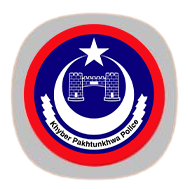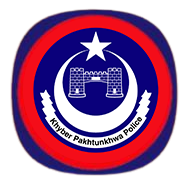-
New Apps
-

-

History
The areas that constitute present Khyber Pakhtunkhwa have witnessed Persian, Greek, Bactrian and Kushan influences. Later on, after the advent of Islam, the land of Pashtun came under the rule of the Ghaznavi, the Ghauri, the Temuri, the Afghan, the Mughal and the Sikh dynasties. These dynasties maintained various arrangements for watch and ward like Kotwal in cities, Chaukidar in villages, Barkandaz for supervising labour work of convicts and private militia in different Khanates of that time.
In 1849 the land of the Pashtun was annexed by the British. Initially the British maintained the policing system of the Mughuls and the Sikhs in major parts of the Pashtun land, however, to establish durable peace and security Punjab Frontier Force was raised. After War of Independence, a full-fledged policing system was established under Police Act of 1861. Police Act was extended to frontier territory in 1889. .
In 1901, the frontier territory was constituted as a province called North West Frontier Province (NWFP) and placed under a Chief Commissioner who was agent to Governor General of India. In this new province, two administrative systems were established: The British territory of the province was divided into five settled districts i.e., Hazara, Peshawar, Kohat, Bannu and D.I.Khan and the territories lying in north and west of the settled districts were divided into five Political Agencies i.e., Khyber, Kurrum, North Waziristan, South Waziristan, and Chitral-Dir-Swat Agency. Each Political Agency was under a Political Agent. The settled districts were under the Inspector General of Punjab. Criminal Courts were established under Code of Criminal Procedure in 1889. There was Cantonment police for the protection of garrisons as well. For Political Agencies, different Levies were raised like Samana Rifles, Border Military Police, Chitral Scouts and Kurrum Militia. In addition to the Levies, the indigenous Maliki and Khasadari systems were also allowed to continue. Samana Rifles and Border Military Police were merged in 1913 and a new force of Frontier Constabulary (FC) was constituted. In 1935, Police Training School was established in Hangu.
From 1901 to 1947, all Inspectors General were either from British military or from civil officers. After independence in 1947, Khan Gul Muhammad Khan became the first local IG Police in 1948. In 1955 Muhammad Anwar Ali became the IGP when NWFP became part of West Pakistan under One Unit System. M.A.K Chaudhri was posted as IGP NWFP in 1970 after the abolition of One Unit system. In 2010 NWFP was renamed as Khyber Pakhtunkhwa (KP) during the tenure of IGP Malik Naveed Khan.
From 1947 to 2001 no major paradigm shift took place in the NWFP police organization except when the police uniform was changed and black color shirt was introduced while the Khaki drill trouser of Pakistan Army was kept intact. This was done during President Ayub Khan time and this pattern of uniform is still in use.
The enactment of Police Order 2002 ushered in new vistas in the Police Organization. This Order brought civilian oversight on the police; it introduced Public Safety Commissions, Police Management Board and Police Bureau. It also introduced the concept of functional specialization in the police i.e., separation of Watch & Ward from investigation on professional lines.
The year 2017 witnessed a mile stone achievement in the Khyber Pakhtunkhwa Police with promulgation of Khyber Pakhtunkhwa Police Act 2017 which gave Administrative and financial autonomy to the Police. The pillars of the KP Police Act 2017 are:
- ✔ Apolitical
- ✔ Professional
- ✔ Accountable
- ✔ Transparent Processes
- ✔ Autonomous
- ✔ Community based
